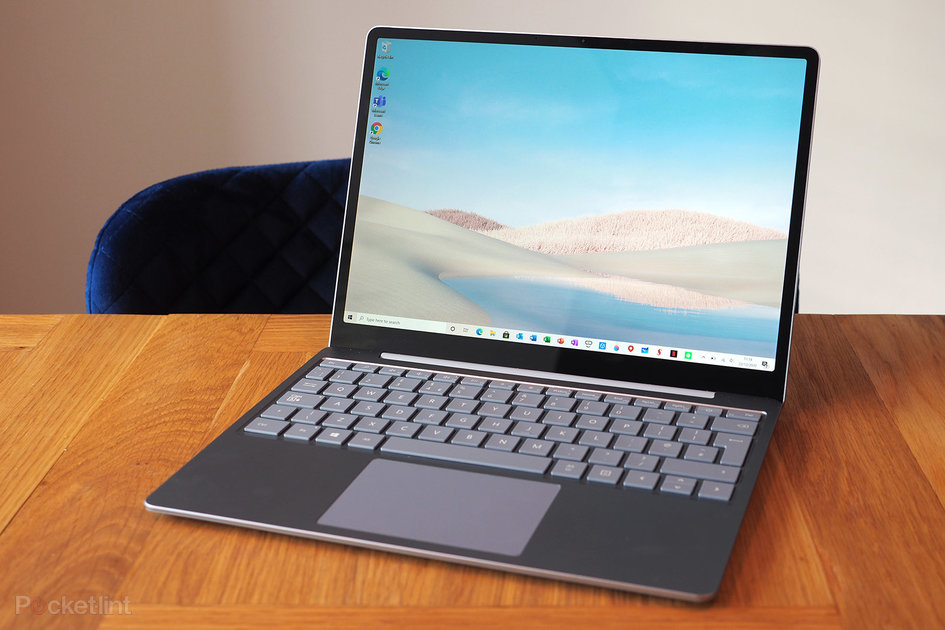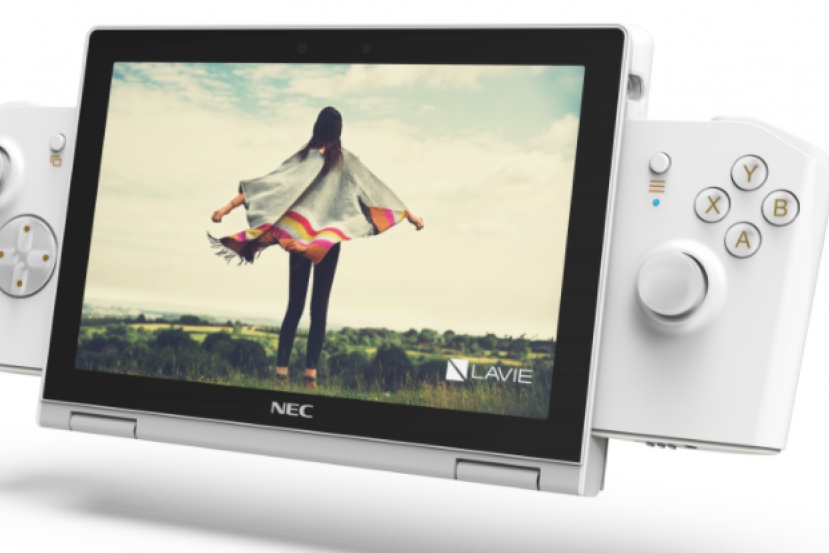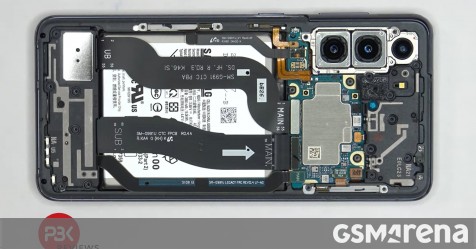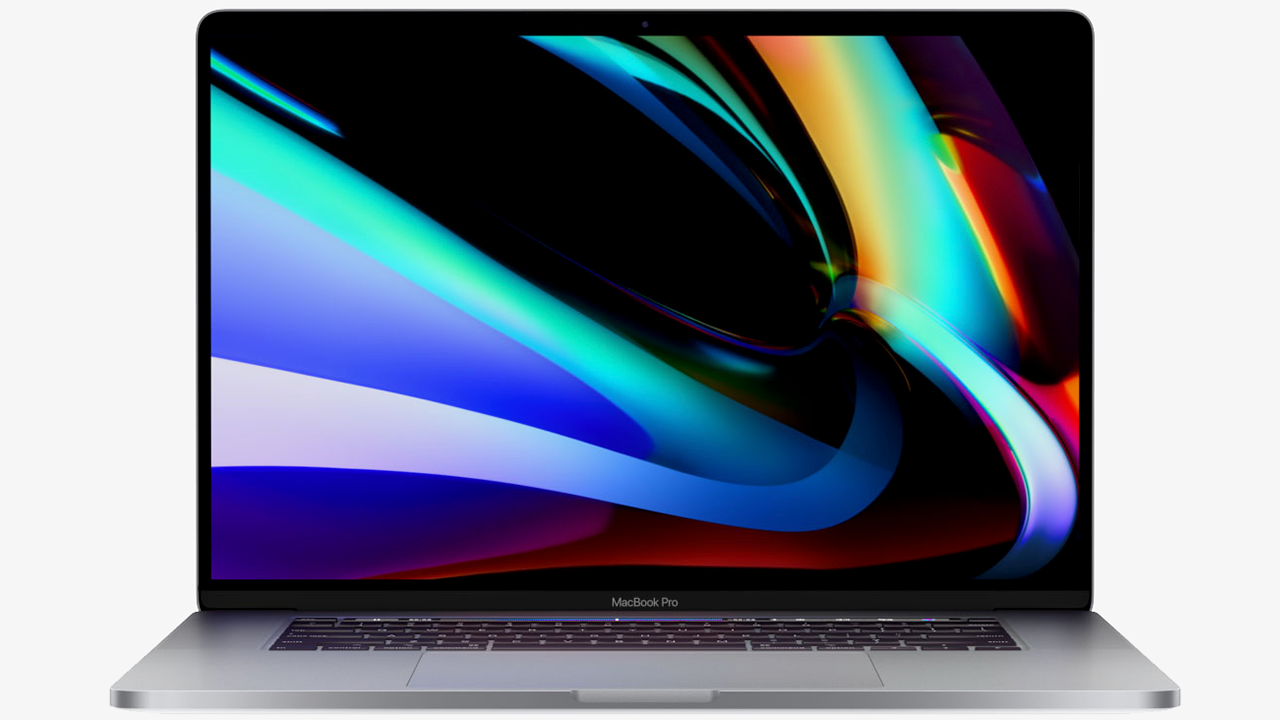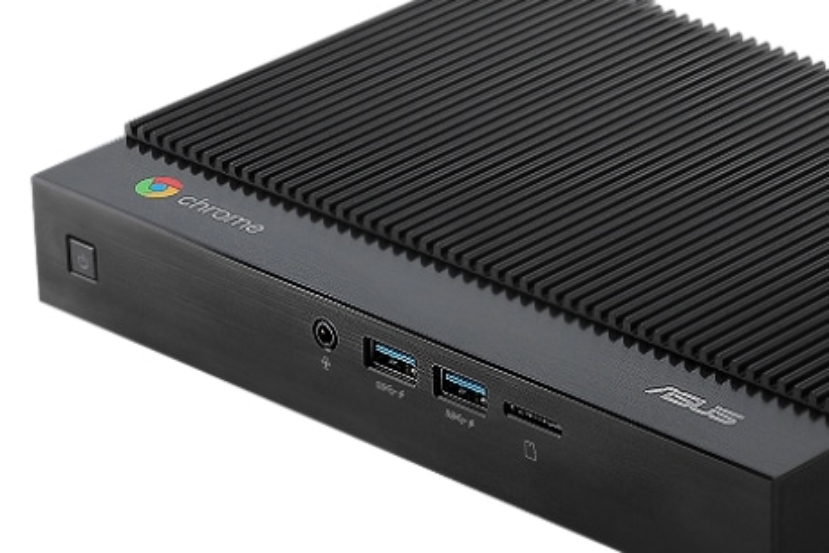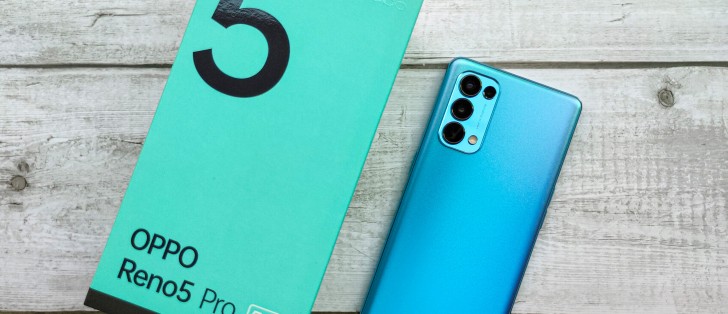
Introduction
The Oppo Reno5 Pro 5G is the second-best smartphone from the lineup after the Reno5 Pro+ 5G. Being second-best doesn’t mean there anything to scoff at, and everyone looking for an affordable flagship experience should definitely check out the Reno5 Pro and Reno5 Pro+.
The subject of our hands-on review is the Reno5 Pro 5G, and it employs MediaTek’s top-tier SoC for 2020 – the Dimensity 1000+. And aside from the camera setup, the Reno5 Pro 5G checks all the right boxes. It has an HRR OLED panel, a sizeable battery, blazing-fast charging, premium build.
Oppo Reno5 Pro 5G specs at a glance:
Body: 159.7×73.2×7.6mm, 173g; Glass front, glass back, aluminum frame.
Display: 6.55″ Super AMOLED, 90Hz, HDR10+, 800 nits (typ), 1100 nits (peak), 1080x2400px resolution, 20:9 aspect ratio, 402ppi.
Chipset: Mediatek MT6889Z Dimensity 1000+ (7nm): Octa-core (4×2.6 GHz Cortex-A77 & 4×2.0 GHz Cortex-A55); Mali-G77 MC9.
Memory: 128GB 8GB RAM, 256GB 12GB RAM; UFS 2.1.
OS/Software: Android 11, ColorOS 11.1.
Rear camera: Wide (main): 64 MP, f/1.7, 26mm, 1/1.73″, 0.8µm, PDAF; Ultra wide angle: 8 MP, f/2.2, 115˚, 1/4.0″, 1.12µm; Macro: 2 MP, f/2.4; Depth: 2 MP, f/2.4.
Front camera: 32 MP, f/2.4, 26mm (wide), 1/2.8″, 0.8µm.
Video capture: Rear camera: 4K@30fps, 1080p@30/60/120fps; gyro-EIS, HDR; Front camera: 1080p@30fps, gyro-EIS.
Battery: 4350mAh; Fast charging 65W, Reverse charging, SuperVOOC 2.0.
Misc: Fingerprint reader (under display, optical), NFC (market dependant), no 3.5mm audio jack.The good news is that this time around, Oppo seems to have priced this device reasonably.
But before we make any preliminary conclusions, let’s take the Reno5 Pro 5G for a spin and see why we think the Reno5 Pro 5G has its spot in the market and what makes it stand out from the crowd.
Unboxing the Oppo Reno5 Pro 5G
The handset comes in a standard box with the appropriate charger and cable. There’s also a transparent silicone case as a bonus and a pair of USB-C headphones, but no USB-C to 3.5mm dongle.

Testing Tests overview Smartphone Oppo Reno 4 Pro in the test: Top smartphone for 500 € Motorola Moto G 5G Plus test: A lot of battery for little money Huawei P Smart 2020: Budget model with room for improvement Asus Zenfone 7 Pro: Turbo smartphone with flip camera Samsung Galaxy Xcover Pro in the test: hard but slow Oneplus Nord N 10 5G in the test: galloped in price Oppo Find X2 Pro in the test: performance bargain Smartwatch Oppo Watch in the test: Great AMOLED Smartwatch from 240 € Samsung Galaxy Watch 3 in the test: competition for Apple? Huawei Watch GT 2 Pro in the test: Smartwatch with cross-country battery Apple Watch: Smartwatch with contract from 15 € per month Buy Apple Watch 6: All generations in the price -Check Skagen Falster 3 in the test: Smartwatch with Wear OS Test Huawei Watch GT 2: Noble fitness tracker in watch form Multiroom Ikea Symfonisk table lamp in the test: Sonos with lamp Ikea Symfonisk in the test: Sonos loudspeakers under 100 Euro Bose Portable Home Speaker in the test: Battery, WLAN, Airplay 2 Sonos Move in the test: The robust all-rounder Musiccast: Multiroom from Yamaha in the test Denon Heos in the test: versatile multiroom system Flat soundbar Teufel Sounddeck Streaming in the test Keyfinder Tile Slim (2019): Key finder in credit card format Bluetooth key finder Tile Pro in the test: 122 m range! Key finder Tile Pro in the test: the range champion Orbit Bluetooth tracker in the test: looking for wallet and keys Nonda iHere 3.0: smart key finder in the test Chipolo Classic and Plus : Bluetooth key finder under test Musegear finder 2: Key finder without mandatory registration Action-Cam DJI Pocket 2 in the test: Zoom and 64 – Megapixel sensor Actioncam Insta 360 One R: 1-inch image sensor in the test Gopro Hero 8 Black in the test: Back to the top Insta 360 One R in the test: The modula re Actioncam Motorola Moto G8 Plus test: Great smartphone, but … Insta 360 Go: Micro-GoPro in the test Motorola One Action Test: good hardware, bad camera microSD In the test: Kingston UHS-I U3 microSDXC Kit MicroSD card for smartphone: Samsung Evo Plus 2017 Test report: Lexar Professional 1800 x microSDXC Kit Test report: Intenso Premium microSDXC – Card with 64 GByte Android Sonos Move in the test: The robust all-rounder Honor 20: Inexpensive high-end smartphone in the test Xiaomi Mi 9: Top technology at a bargain price Doogee S 90 in the test: modular outdoor smartphone ZTE Axon 07 Pro in the test: high-end phone at a competitive price Motorola Moto G7 Power in the test: large battery, small price Sony Xperia 10: Smartphone with 21: 9 display in the test Adviser Guide overview Purchase advice The right cordless screwdriver for the home workshop Bargain: Which Fire TV Stick from 19 € is the right one? Purchase advice: What good is a leaf blower with a battery for 45 Euro? True wireless headphones: How much do you have to invest? Buying advice water cooling: High-end PCs cool better Advice: Air conditioning and fan against the heat wave Sony shows the Xperia 1: Is the predecessor XZ3 worth it now? Practice Caution, money away: Kickstarter & Co. are not Shops Switch off Android notifications from annoying apps This is how it works: Install the new Android L keyboard now Tip: Use “Ok Google everywhere” in Germany In the test: Does the jailbreak work for iOS 7.1? Goderma and mobile medicine: The doctor apps are coming! Instructions: Jailbreak for iOS 7 on iPhone 5S, 5, 4S and 4 Technology Importing technology from China, part 2: Customs, taxes and tricks Drones & copters: From toys to FPV racers What does the end of an ecosystem mean? Smartphones with a flexible display: What’s the point? Overview of smartphone processors: Everything Snapdragon? Evolutionary dead ends: the very worst cell phones mpass: Pay with the NFC mobile phone or the NFC toilet roll Display calculator Calculate pixel density, number and display proportion Leaderboard Test winner Price comparison Price comparison overview Smartphones from Android 7.0 Phablets with stylus Fitness tracker with GPS Bluetooth headphones with ANR Drones with GPS Video TechStage Test Oppo Reno 4 Pro in the test: top smartphone for 420 € Beginning Design Display Camera Equipment Battery Price Conclusion Comments from Stefan // 18. 01. 2021 17: 07 Clock
Oppo is hardly known in this country, but some models offer real top performance. The Oppo Reno 4 Pro comes with about 12 / 256 GByte memory, great OLED screen and flagship camera.
Oppo, Vivo, Realme – all Chinese brands that have just hit the German market and want to cut a piece out of the Huawei cake. Thanks to great technology and chic design, it actually works very well. If the price is right, the manufacturer and customer are happy.
At Oppo it is a little different. For the Oppo Reno 4 Pro, the manufacturer demands a full 750 Euro in the RRP – and that, though no top chipset, no IP 68 certification and no wireless charging included. In the test, we show why the purchase is still worthwhile.
Design It is chic, the Oppo Reno 4 Pro, there will probably be little counter-argument. With a depth of only 7.6 millimeters, the smartphone is really thin and the remaining dimensions of 160 × 72, 5 millimeters is moderate for a device with a 6.5-inch display. In addition, the device weighs just once 172 Gram – for all heavyweights with 172 + grams this is very positive. In addition, there is a high-quality material impression. The frame with its stylish bevels on the front and foot sides is made of aluminum, the front and back are protected against scratches with Gorilla Glass 5. Because of the rounded sides, which are quite gentle for an edge display, the frame on the sides is very narrow and the smartphone looks even more delicate.
There is also a chic back with a matt finish and gradient. Our blue test device therefore changes between medium blue and turquoise depending on the incidence of light. Thanks to the matte surface, fingerprints and other ugly fat deposits are not an issue. The great overall impression is crowned by the very good workmanship. The transitions between the different materials can only be felt minimally, there are no sharp edges. The only exception here is the protective film that sticks to the screen at the factory. It can be easily removed. The keys embedded in the side of the frame sit tight and wobble-free, the pressure point and key travel are exemplary.
Together with the evenly narrow frame around the display, the punchhole notch and the chic design, the Oppo Reno 4G is currently one of the highest quality models on the market. It is a pity that the manufacturer only offers IP protection against water and dust 54 elects. A brief downpour is not a problem, but the device must not fall into water.
All pictures of the Oppo Reno 4 Pro in the test (23 Pictures) Display The screen has a diagonal of 6.5 inches. With a resolution of 2400 × 1080 Pixel results in an image sharpness of just over 400 ppi (pixels per inch), that’s sharp. In addition, thanks to OLED technology, the display shines with strong contrasts, an excellent black level and, if desired, strong colors. In the default setting, the color rendering is quite natural. Class is the brightness: are round 500 cd / m2 in manual Mode still not very impressive, it is the measured 696 cd / m2 in automatic mode. In combination with the very good viewing angle stability typical of OLEDs, users have no problems reading content even in direct sunlight.
We liked the display in the Oppo Reno 4 Pro: The screen has a refresh rate of 90 Hertz, provides moving content more fluidly than models with 60 Hertz. In addition, the smartphone’s always-on display and its general setting options for the display are a plus point.
Camera Oppo does without data sheet prettiness with macro or depth sensors and builds an honest triple cam into the Reno 4 Pro. It consists of the main lens with 45 Megapixels, optical image stabilizer and f / 1.7 aperture, wide angle with 12, 2 megapixels and f / 2.2 as well as telelens with 13 Megapixels and f / 2.4. In front comes an optic with 32 Megapixels used.
The main camera is very good, the additional lenses are good The quality of the main camera is convincing. Image sharpness, level of detail, color reproduction and image noise are all on a very high level, and the image dynamics are very good. This puts the main camera of the Reno 4 Pro at the top level. This also applies with only slight drawbacks in poor lighting conditions, but here some high-priced competitors are a bit better, for example the Huawei Mate 40 Pro (test report). Unfortunately there is one for telephoto and wide-angle lenses n slight decrease in quality, and the coordination of the individual lenses with one another is not perfect. The result is that the telelens, for example, captures images in the memory with a lighter color and less color – this shouldn’t really happen with a smartphone in the upper price range. Overall, the image quality of the additional lenses is still good, but they do not come close to the quality of the main lens. The main disadvantages are image sharpness and image dynamics.
All original recordings with the Oppo Reno 4 Pro (37 Pictures ) The same applies to the front camera. Although it delivers very attractive images overall, it looks a bit too fishy and the image sharpness should also be higher. The main camera delivers decent, but not overwhelming results for videos. This is also due to the fact that with 4 / 30 is over and pans are never sharp. The image stabilization, like the other image quality, is otherwise arranged in the upper third of the smartphone range and therefore fits the price.
Furnishing The quality of the Oppo Reno 4 Pro is excellent, the display is great and at least the main camera is top-notch – can the rest of the equipment keep up? Mostly yes, but not in all cases. Users have to make slight compromises with the chipset. Because despite the rest of the equipment of 12 GByte RAM (!) And 256 GByte of internal memory, the manufacturer does not use the top chip Snapdragon 865 (+), but “only” on a Snapdragon 765G. The eight cores of the chip clock at up to 2.4 GHz, one Adreno 620 ensures sufficient everyday performance. For gaming, the chip with a G in its name offers a few advantages that are supposed to provide more power and faster loading times compared to the same chip without a G.
Overall, most games can be played smoothly, but for a few exceptions an 8-series chip would have been desirable – also with a view to the RRP of the Reno 4 Pro. Unsurprisingly, multitasking is not a problem with the amount of memory, but it hardly has a positive effect in benchmarks. In PCmark Work 2.0 the device reaches around 7900 points, that is roughly on par with other smartphones with Snapdragon 765G. The same applies to Antutu, here the model reaches about 256. 000 Points.
Apart from that, the Reno 4 Pro offers a comprehensive technology package with WLAN ac, Bluetooth 5.1, location via GPS, Glonass, Beidou, Galileo and QZSS as well as LTE and 5G. Instead, savings are found in the details. The ample internal (non-expandable) storage only has a UFS 2.1 speed, Wifi 6 is missing and the USB-C port only offers 2.0 standard. There is dual SIM capability and stereo speakers for this. They are loud and powerful, but the competition is a bit better here at times. The fingerprint sensor in the display is well implemented. It works quickly and reliably with light pressure.
The user interface Color OS 7.2 is above Android 10, an update to Android 11 did not exist yet. The security patch is as of December 2020 pretty up to date. Compared to before, Oppo has improved its update supply and now regularly brings patches. The Color OS interface offers a number of additional functions, but does not appear overloaded, but modern. There isn’t much bloatware on the Reno 4 Pro.
Battery pack The 4000 mAh of the built-in battery does not sound particularly impressive and it is therefore not surprising that the Oppo Reno 4 Pro does not Is cross-country skier. Nevertheless, the smartphone achieves better endurance values than some competitors with a stronger battery pack. The device comes in the PCmark battery test at 200 cd / m2 on almost 9 hours with an active screen and a brightness of 80 to 20 percent – that is with activated 90 – Hz function of the screen is a decent value. The good benchmark result was confirmed in the test. Transferred to the test routine, the device is definitely good for one, with minimal restrictions even for two days without an external power supply.
A bit of a shame with the price shown: There is no wireless charging. But the Reno 4 Pro offers another highlight: fast charging with full 65 Watt. This means that the device fully charges again in barely more than half an hour and intermediate charging is like a sprint from Usain Bolt in his best days. This is impressive.
Price It already sounded: The EIA of the smartphone is proud 799 Euros, but the street price is now significantly lower – as long as it doesn’t have to be the newer color variant Green Glitter. Otherwise there is a choice of blue and black, there are no technically different variants.
Conclusion The Oppo Reno 4 Pro is a really great smartphone that you can hardly blame. The biggest point of criticism is the price: 799 Euro RRP for a manufacturer who does not yet have a name in this country, also no wireless charging, no IP 67 and no top chipset? It’s just too much. The situation is different with the street price at which the device has now leveled off. That is more or less significantly below 600 Euro, even offers just below 500 euros already existed.
In return, buyers receive an absolutely chic smartphone, which also impresses with a great display, an extremely large amount of memory, a top-quality main camera with good additional lenses and an extremely fast-charging battery. The device competes with models such as the Oneplus 8T (review) or the Oppo Find X2 Pro (review) from our own company. Models like the Xiaomi Poco F2 Pro (test report) show that models with top chipset can be significantly cheaper.
Permalink: https://techstage.de/-11801
Tags
Flagship smartphone Oppo Smartphone All-inclusive for children: Contract & smartphone up to 15 €
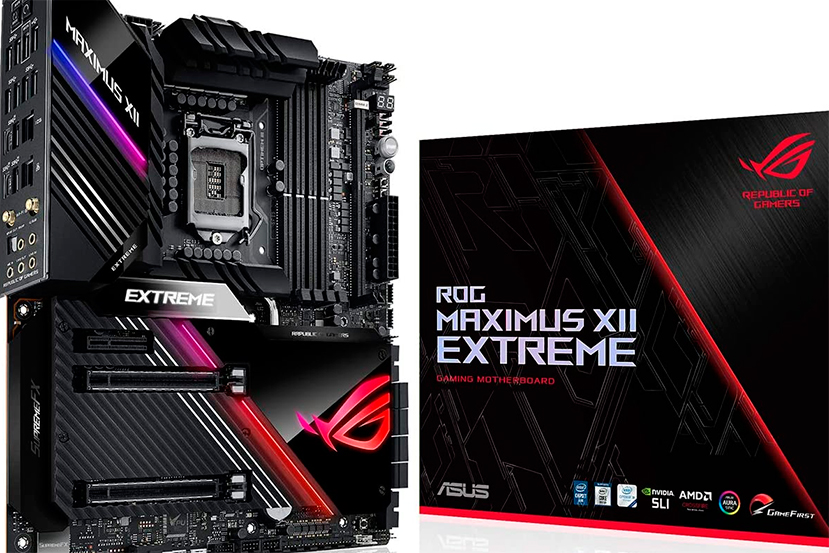
Introduction to ASUS ROG Maximus XII Extreme Specifications
Tenth Gen Intel Core is still one of the best options for gamers and ASUS has some of the best motherboards For this generation, it also has other models that are iconic like the brand, which grow with each generation, as is the case with the ROG Maximus range in its Extreme variant. This is the twelfth generation of a mythical saga and the truth is that this version is undoubtedly at the height of its predecessors. Let’s see what the powerful ASUS ROG Maximus XII Extreme is capable of in this review.
It is true that all motherboards with the same chipset, both this one that costs several hundred euros, and those that cost little more than 160 Euros, they share a large part of the benefits, but it is also true that these exclusive models offer everything that technology can offer for each generation. Today we will see precisely what a motherboard of this type can offer.
Technical characteristics of the ASUS ROG Maximus XII Extreme
Socket: LGA 1200
Chipset: Intel Z 590
Memory: 4x DDR4 DIMMs up to 2280 + MHz XMP 150 GB Maximum.
SATA Storage: 6Gbps RAID 0, 1, 5, 11
PCIe storage: 4xM.2 4800 – 22110 Socket3 PCI Express 4.0 4x
Slots: 2x 18 x PCI Express 3.0, 1xPCI Express 3.0 4x.
Sound DSP: Realtek S 1220
Setting power supply: 17 Infineon phases without multipliers, Digital VRM, EPS 8×2 input
Others: USB 3.2 Gen2x2 connectivity 20 Gbps Type-C, 2xThunderbolt 3 45 GBps, 11 GbE , 2.5GbE, Wifi-6, Bluetooth 5.1
Chipset Z 588 from Intel
The Intel Z chipset 588 has been designed to take advantage of the most expensive processors in the new range, those that have an unlocked multiplier and have been optimized to achieve the best automatic overclocking, also supporting the Intel Performance Maximizer application with Dedicated configurations for this chipset with 10th Gen Intel Core K-series or KF-series processors.
Regarding the new features, we can add to this chipset the support for the direct integration of a first-rate wireless chipset such as the Intel WiFi-6 AX 225 with support for Gig + CNVI (this is how the direct support of Wifi-6 IP by the new Intel processors).
Support is also added for the new chipsets Ethernet 2.5Gbit i 225 from Intel with support for lower speed modes such as Gigabit (1000 mbps) o Fast Ethernet (100 mbps).
Storage connectivity, unfortunately, remains as before, with 8 SATA 6gbps ports with RAID 0, 1, 5 modes and 11. PCI Express connectivity remains at type 3.0 and in terms of storage, which we will have to distribute among the available processor and chipset lines, they support RAID 0, 1 and 5 modes.
The graphic connectivity does not vary either, with support for up to three simultaneous screens that will have to come from the hand of the processors with HD graphics 630 integrated (remember that models finished in F do not have integrated graphics and the board connectors will be useless). Of course this chipset also continues with support for Intel Optane hybrid storage technology.
Regarding the number of PCI Express lanes available, the Z 390 does not add anything about the Z 490 since it keeps the 25 PCI Express 3.0 lanes of the previous generation. The same happens with the communication interface with the processor, which remains at 8GT / s of bandwidth and the same happens with the USB 3.2 support with up to 6 Gen2 ports of up to 11 Gbps of bandwidth. USB connectivity must also be shared with up to 10 5Gbps USB 3.1 Gen1 ports supported by the chipset.
The memory medium allows you to install up to four banks with up to 128 GB of RAM Dual channel (supported by processor) also supports graphics configurations (also supported by processor) of up to three cards with modes 16 x for one card, 8x for two, and 8x + 4x + 4x for three card configurations.
It is not a great improvement, it is clear, and in fact the most important lack is the lack of the PCI Express 4.0 interface that offers improvements not only in terms of connective speed but other features such as allowing the interface full access to the GPU memory.
The TDP of this chipset is kept in the 6w of previous generations which allows Intel to maintain completely passive solutions for chipset cooling under normal conditions, which we will see in almost all motherboards on the market.
Expansion and connectivity
Still With its impressive size this motherboard continues to meet the standards allowed by its processors and chipsets. In fact, what is most surprising about it is that it barely has connectors, not even for graphics cards. It has only three expansion slots, two in size 18 x, but one of them with actual maximum links of 8x. The third slot, above the main one, with a link of only 4x.
How could the plate be otherwise supports SLI and Crossfire and does not base its expandability only on these connectors, it is a marvel in high-speed storage in M.2 PCI Express format, but with the limitation of this platform at PCI Express 3.0 4x speeds per drive.
Like other models of the brand ROG Maximus XII Extreme , this generation comes equipped with a ROG DIMM.2 module capable of storing two M.2 PCI Express drives with up to 4x link and size
. One on each side and with passive heatsinks on each of them.
Under the chipset heatsink, which occupies half a motherboard more like of aesthetics than of real dissipation, we will find two other modules with M.2 socket. Both have a maximum length of 90 mm, the usual, one of them being PCI Express 3.0 4x and the other hybrid mode with the possibility of mounting SATA drives as well.
Shares connectivity with one of the eight SATA ports with RAID type 0, 1, 5 mode and 11 which are located on one of the turned sides 90 degrees for more accessible connectivity.
Regarding USB connectivity, the specifications are quite impressed nantes. In the rear connectors area we can find 1 USB 3.2 Gen2x2 connector of 21 GBps in USB-C format that is accompanied by two Type A connectors with USB 3.2 Gen2x1 connectivity with speed up to 12 Gbps and another one with the same speed, but also in USB-C format.
In this connector panel we will also find 6 5GBps USB 3.2 Gen1 ports in Type-A form factor and two legacy USB 2.0 ports. The front is also perfectly equipped with two Type C connectors with speeds up to 10 Gbps, 4 USB 3.2 Gen1 ports 5GBps type A and four legacy USB 2.0 ports. Without a doubt an impressive equipment.
ASUS includes in this model a connection module Thunderbolt 3 that adds two ports with this connectivity, we will have to use one of the PCI Express ports on the board, preferably the 4x, which will allow us to have two links of up to 40 bidirectional GBps with full support for Displayport, with pass-through cables for dedicated graphics, networking high speed, Thunderbolt 3 device concatenation, load up to 15 w per connector … etc.
No There is graphic connectivity in this model, it is not designed for that. ino to assemble the best graphics on the market. As for the rest of connectivity the numbers are still remarkable.
Wireless connectivity includes a Intel AX chipset 225 with Wifi-6 support and access speeds of up to 2.4Gbps with 2×2 links and support for dual band 2.4 and 5GHz. Supports channels up to 160 Hz, as expected from any Wifi-6 compatible wireless chipset. This chipset adds Bluetooth 5.1 compatibility.
Ethernet connectivity is also of the highest order. On the one hand, a Intel I interface 390 – V up to 2.5GBps to which adds a powerful Marvel AQtion AQC 107 with support for link speeds of until 10 Gbps. Both interfaces support lower speeds such as Gigabit or 100 Mb Ethernet and use RJ wiring 80 traditional.
Among other integrated connectors we can find up to 8 connectors for fans, PWM type, with connectors especially designed for CPU and liquid cooling drive pumps. It also has TPM connectors, two ARGB connectors, a four-pin RGB connector, a jumper for LN2 mode, a front connector for HD-Audio and a long etcetera.
The ASUS pack also includes a connection multiplier for 6 additional fans also accompanied by ARGB connectivity multiplication points . This module can be installed on either side of the box and centralize the control and monitoring capabilities on the motherboard itself.
The ROG Maximus XII Extreme also includes extensive control and monitoring systems on the motherboard itself. From quick access buttons for power on and reset and a monitoring panel mounted between the VRM heatsinks and the chipset cover plate that not only provides boot information but also the status of the system in the form of an OLED screen or through a classic display Two digit POST.
Design and power
The latest generation motherboards, at least the most expensive ones, tend not to look like motherboards using covers of all kinds to camouflage some of their elements main. In the case of this model the effect is undoubtedly achieved and that is also one of the largest motherboards for this chipset that we can find on the market.
Its size is Extended ATX , a format normally used in motherboards for workstations or servers and usually capable of two simultaneous processors. It is large and we must take that into account to mount it in the appropriate box to handle this unusual size in motherboards for desktop systems.
The Maximus XII Extreme is a motherboard base of perfect finishes as we can see in its cover for chipset, in the reduction of connectors for expansion cards and in the perfect location of the rest of the connectors that achieve a clean and modern look that is crowned by large areas of ARGB lighting and that panel OLED displaying information in real time, which ASUS calls LiveDash OLED 2 .
The chipset heatsinks and MosFETs are connected by heatpipes, but they are barely visible, even the solid aluminum heatsinks of the power supply system are hidden between so much well-positioned cover. The design is magnificent and is finished off with elements such as the fixed cover for the rear connector panel or an excellent distribution of each connector, all where they should be, concentrating the management elements such as buttons and switches, positioning SATA and USB connectors to 94 degrees for better management, or concentrating all the fan connectors in the lower area of the board.
The design of this plate also seeks excellent passive cooling and all this load is offset by an aluminum “backplate” that runs along the entire back of the plate. It helps to cool and also to stiffen the base plate, achieving a robustness that is resistant to any load that we are going to connect to it, apart from the one that already comes standard.
The board layout also includes three main lighting zones plus two Aura RGB connectors that we can control from Windows. The system allows us to synchronize any RGB element that we have installed on the computer and is also compatible with many other brands of peripherals, such as Razer.
The power supply of this motherboard is not conventional either. The processor will have two auxiliary connectors of 15 v with up to 720 Amps input capacity , which equates to solutions for processors of many more watts than the 10th generation Intel Core and LGA socket 1200 for which it is designed.
It also has a system of 17 Infineon TDA phases 21490 digit power By being made with top quality materials such as their RDSON resistors that improve efficiency by reducing thermal impact, MicroFine alloy choke coils capable of supporting up to 80 amps per unit or capacitors 11 k Black Metallic made in Japan.
ASUS uses in this model its latest technology in digital power assemblies without implementing duplicators that add latency in response to processor consumption. That is, higher quality components are used to eliminate the need for line duplicators.
Sound
The integrated sound system is also the best that ASUS integrates currently on their best motherboards, from any of the existing platforms. It has a DAC ESS ES 9023 High resolution P with harmonic distortion up to – 94 dB and that accompanies a very solvent DSP, also widely used, such as the Realtek S 1280 with support for 10 channels, 7.1 sound systems and multiple stereo connections for front connectors.
ASUS has also used high-quality components including shift MosFETs built into a separate PCB that enable a system adaptive impedance for any quality of auri culars that we want to connect. The power system also includes gold Nichicon capacitors used in the best high definition sound systems.
ASUS has installed, as usual, a front HD Audio connector and also a rear connector system for 7.1 analog auto-sensing systems, gold-plated and illuminated from the inside to make them easy to locate in the dark. ASUS also integrates an optical-type digital Toslink connector for digital systems.
Bios and Software
Although there are no changes on the aesthetics of the ASUS UEFI system The truth is that the ROG design of this bios is still one of the most functional and attractive on the market. ASUS has delved into overclocking facilities for users who do not want to get complicated and also continues to offer all the customization capabilities that those users who want a more personalized control of memory, processor, storage, etc. can dream of
Automatic overclocking continues working perfectly with tight voltages and good performances and support for high speed memories is excellent with up to 150 GB capacity with speeds up to 4800 MHz dual channel.
ASUS also supports Add to this model, like all its recent models, with the Armory Crate “plug and play” system that allows quick installation, through the internet, of everything the software that ASUS makes available to users as well as allowing bios updates and other updates. This software also allows the control of our system from a single and accessible control panel.
An exceptional motherboard, also in the price
During this CES 2280 we have seen some traces of what Intel is preparing us for this year, including new generations of chipsets and processors, such as spectacular motherboards based on the Z chipset 590 from Intel, such as the exclusive ASUS ROG Maximus XIII Extreme Glacial, the evolution of this model, which can be sold as a limited unit for a price higher than 1800 Euros including an incredible complete liquid cooling system integrated mind.
Be that as it may, this one that we have shown you, the motherboard that has allowed us to reach the 5200 MHz on all cores with Intel Cryo, in fact It is one of the few motherboards recommended by Intel to use this cooling technology below room temperature, it is also a truly exclusive model, with a recommended retail price of 900 Euros that make it one of the most expensive motherboards on the market for this chipset.
It is true that there are not much alternatives better, at least with this level of complexity, accessories and integrated components, although it is also true that we do not need s from a motherboard of 901 Euros like this to enjoy most of the benefits and features offered by 10th generation Intel Core processors.
End of Article. Tell us something in the Comments or come to our Forum!


